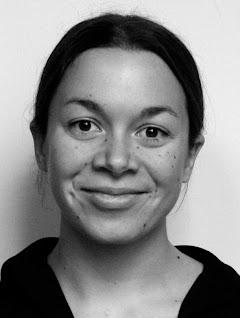Beat
I cover features, sports, news and politics.
One Shot

“I love a good head-scratcher. One of my favourite images is this photograph of a boy with his feet sticking out of the water as he noodles for catfish. Without the context of the other photos in the story, it makes absolutely no sense. Is he swimming? Is he dead? What’s going on here? He’s actually fishing for catfish with his bare hands, which is almost as strange an answer as the photo itself.”
Profile
I didn’t pick up a camera until college. I had a friend who was majoring in photography and I was fascinated by the notion of it. I borrowed her camera, shot one terrible roll of film and decided then and there that I would to become a photojournalist. I loved the idea of being able to convey stories through photographs.
At college, I majored in photojournalism and learnt the basics. But it was really through internships that I learnt how to be a photographer, how to react to situations and how to put myself in the right place to make a good photo.
My first paid, non-internship assignment was on September 11, 2001. I had just returned to Boston and woke up that morning to footage of smoke coming from the north tower of the World Trade Center on the morning news. As television reporters were starting to piece together details of what was happening and were speculating that there were still other planes up in the air I grabbed my camera bag and headed to Boston’s tallest building. On the way I called the local AFP photographer. He was headed to New York City so he assigned me to help cover Boston.
In the days that followed September 11, I photographed national guardsmen walking through the airport with guns, I covered memorial services for the people who were killed and I responded to the anthrax scares. I learnt how hard it was to document mourning and loss and how to be respectful and delicate about photographing in such situations.
Early on in my career I was sent to New Orleans for Reuters to cover the aftermath of Hurricane Katrina. I was switching out with the first wave of photographers who had gone in for the immediate devastation, which meant that I arrived about ten days after the hurricane. It was the first natural disaster that I had covered and the scale of the damage and loss even ten days later was almost incomprehensible. Since then I have covered other hurricanes, floods, tornados, wild fires and blizzards and while all of them have been awful, none are seared into my memory the way that first one is.
There’s nothing that makes me happier than finding a good feature story. I’m endlessly amazed by the way that a camera can open doors and allow you to explore a world that you didn't know existed before. There is a sense of adventure and fun there that I absolutely love.
I tend to focus more on the subject than the audience. I want to make sure that I’m documenting what’s happening to the best of my ability, that I’m doing so in a way that will illustrate the larger story I’m trying to tell while being as respectful to the subject as possible.
In 2006 I did a feature story on Mario Rodas, a boy who had travelled with his family from Guatemala when he was 12 and overstayed a tourist visa. He became a model student and was working to put himself through college when he was picked up in an immigration sweep. When I first met Mario, he was facing deportation back to his native Guatemala and he was brave enough to allow his story to be photographed. He worked tirelessly and I had a tremendous amount of respect for him. After we published his story I lost track of him but a couple of years later, I got a friend request from him on Facebook. He wrote me an email telling me that he had been granted asylum and thanking me for the story that I did. It is often easy to forget how much power an image or a story can have; every now and again it’s nice to have a story like Mario’s to remind us that our work really does matter.
There are so many photographers out there whose work I really respect. One of my favourites is Eugene Richards who has an amazing ability to gain intimate access into people’s lives and then tell their stories in beautiful photographs which hold you and pull you in. His ability to construct a visual narrative and the fearlessness of his photography never cease to amaze me.
Behind the Scenes

